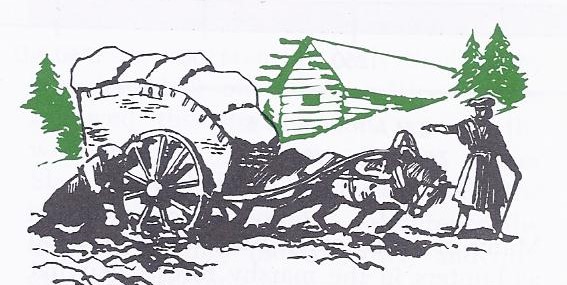Andrei was carving a wooden sleigh. So expert was he in the use of a knife that he could make a toy sleigh, driver and all, in two long winter evenings. Another night would be enough for the horse, which wasn’t difficult, but Andrei always had a hard time with the yoke that went over the neck. The yoke was shaped like a big wishbone and Andrei could never understand why Russian horses wore such high and heavy yokes.
“Just like us peasants!” thought Andrei, “We too carry heavy burdens and are little more than slaves.”
Andrei thought many things that he didn’t say. One didn’t have to he a peasant to learn that lesson in Russia 400 years ago. Look at the terrible death that the local boyar, or noble landlord, had suffered! The ruler of all Russia, Ivan justly nicknamed the Terrible, had been merciless. Even Andrei, who hated all landlords, had pitied the wretched boyar.
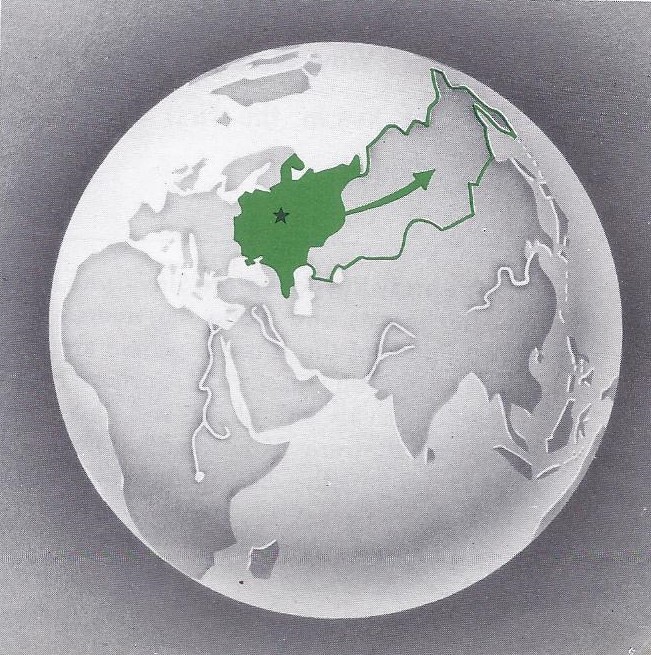
Russia, united under powerful czars, gradually expanded into Asia until it reached the Pacific.
Andrei lived in a region where streams flowed out to three seas — the Baltic, the Black and the Caspian. It was a level land of great pine forests where trappers caught fur-bearing animals and of clearings where farmers grew barley and flax. It was a land of snow and biting cold more than half of each year. Now it was winter and Andrei was carving toys for sale. When spring came, Andrei would put away his knife and pick up his hoe. Much — too much — of what Andrei earned, summer or winter, would go to the new landlord.
Badly off as Andrei was, his sons were to be in a still worse position. To prevent their leaving the farms, the government bound the peasants to stay on the land of their masters. Thus they became serfs, in many ways worse off than those of western Europe in the Middle Ages. Serfdom was formally abolished about a hundred years ago, but the Russian people have never become truly free.
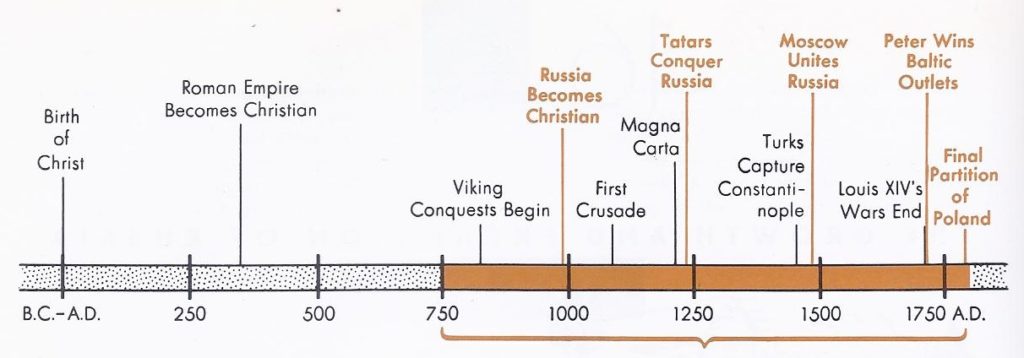
Russia is the largest country in the world (in area) and one of the most powerful. We trace the growth of the Russian nation from its beginnings to the late 1700’s. We seek answers to the following questions:
1. Why were the inland parts of Russia the first to become settled?
2. How did the rulers of Moscow gain absolute power?
3. How did Peter the Great and other rulers expand Russia?
1. Why Were the Inland Parts of Russia the First to Become Settled?
The early Russians were Slavs who lived in the forests and along the rivers. The beginnings of the Russian people are hidden in the dim past. The earliest European Russians of whom we have any knowledge were Slavs and Slavs are still the chief people of Russia. Many of these early Russian Slavs lived as hunters in the marshy forests of what is now western Russia. Others lived fishermen’s lives, paddling their long dugout canoes along the many rivers that flowed through the forests. In natural grasslands surrounded by woodland and in spots where they had cleared away the trees, still other Russian Slavs farmed the soil.
Geography helped the Slavs to move about easily. Like primitive or half civilized people elsewhere, these forest Slavs tended to move about rather than remain in one location. There was plenty of attractive, unoccupied land in Russia in which to roam. Russia is part of a huge plain which (interrupted only by the low Ural Mountains) stretches from the Baltic to the Black and Caspian Seas; and from the mountains of central Europe to the mountains of central Asia. This plain is the “heartland” of Eurasia, a name often given to Europe and Asia because they really are one continent. The north central region was once heavily forested. The south consists mainly of grassy prairies, usually called Steppes. That portion of the plain which lies in Russia is crossed by many rivers. The map follow the courses of such great rivers as the Dnieper, the Don and the Volga. These rivers provide pathways from the heart of Russia to the Black Sea or the landlocked Caspian Sea. Furthermore, with the help of short portages, travel from one portion of Russia to another became fairly easy even for primitive people.
Aided by the open plain and this abundance of waterways, often prodded by invading peoples, the early Slavs spread out in search of new homes. This movement continued for centuries and covered a vast area. In early times many who left their old Dnieper River homes followed the streams and crossed the wide plain to southern Russia. Other Slavs moved north and cast into the heavily wooded country. Wherever the Slavs went, they moved slowly and quietly, like creeping waters of a rising tide.
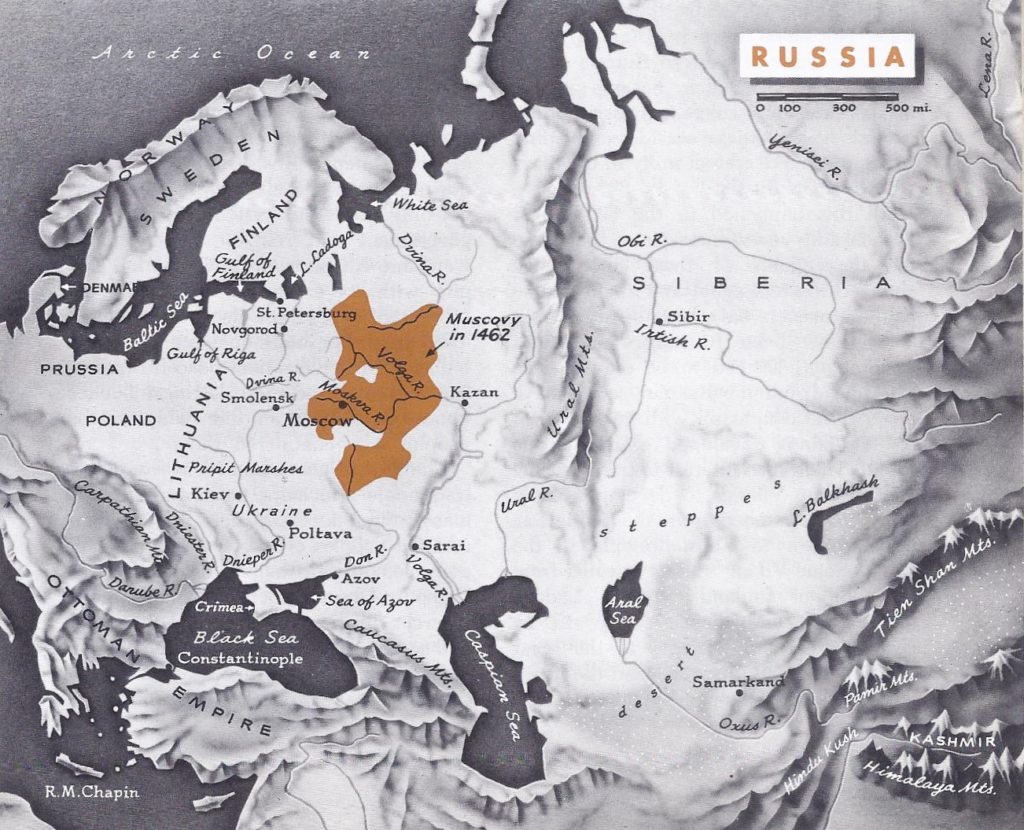
The geography of Russia invited outsiders. Geography not only aided the Slavs to spread out, but also eased the way for outsiders to enter Russia. The great plain lacked natural defenses, while the many navigable waterways encouraged both invaders and traders. Swedes from the northwest; Poles, Lithuanians and Germans from the west; the Tatars from the east; Turks from the south — at one time or another all of these peoples occupied portions of Russia. When danger came to western Europe, it was usually from the north or east. In Russia, danger loomed on all fronts. In Russia, the safest spot was the middle of the country. Though these different tides of invasion eventually lost their power, each had some influence on the Slavs and on the growth of Russia.
The earliest known invaders of Russia were tribesmen from the plains east of the Caspian Sea. These tribesmen maintained a loose control over a part of southern Russia until the mid 700’s when their power faded. Then out of the northwest came the Northmen or Vikings. These Swedish Vikings were bold warriors and keen traders.
Northmen gained control in Russia. Just at the time when the rugged Northmen were spreading out in all directions, it happened that the Russian Slavic tribes and villages were quarreling among themselves. So frequent and bitter were their disputes that, the story goes, they invited the Northmen into their country to make peace! At the very time, therefore, when some Northmen were building up their power in parts of western Europe, other Northmen became peacemakers and petty rulers in Russia. Oddly enough, it was these outsiders who first brought some degree of unity to the Slavs who lived in Russia.
All this happened in the 800’s, over a thousand years ago. Since that time the descendants of these Slavs have changed masters again and again. Some of these masters have been outsiders but many have been Russians. Sometimes freedom has seemed to be only a little way ahead, but the Russian people have never quite caught up with it.
The Vikings developed a great trade route. Their keen interest in trade led the venturesome Vikings to develop a trade route that stretched from the Baltic Sea in the north to Constantinople in the south. Some Viking traders traveled from the Gulf of Finland to Lake Ladoga and thence southward by rivers, lakes and portages to the great Dnieper River. Others reached the headwaters of the Dnieper by going inland from the Baltic by way of the Dvina River. Down the swelling Dnieper the Vikings cruised until they reached its broad mouth. Thence they sailed the Black Sea to Constantinople, greatest Christian city in the world at that time. Follow the course of this trade route on the map.
The Dnieper became a busy waterway on which Viking, Slav and Greek traders travelled. Prosperous towns began to appear on the banks of this river. One of these was Kiev, from which a Viking chief ruled over nearby lands. Kiev was a border city, however, and for that reason always in greater danger of attack than cities and towns farther inland. Smolensk was another city on this important trade route.
Far to the north an important trading centre grew up at Novgorod. Here energetic merchants and artisans, through an elected assembly, named this or that prince commander of the army and controlled taxes and justice.
Traders spread Byzantine influence along the great trade route. Travel went up the Dnieper River route as well as down. By the peaceful methods of trade, not only goods but customs and ideas of government and religion flowed northward into Russia from the Byzantine Empire with its capital at Constantinople. These customs and ideas from Constantinople represented a high level of civilization, peaceful traders had a greater and more lasting influence upon the Slavs than did many of the peoples who conquered them.
The flow of goods and ideas from Constantinople also helps to account for the many differences between the Russians and the peoples of western Europe. For example, Russians belonged to the Greek Orthodox Church, not the Roman Catholic Church. Russian rulers copied the pomp and ceremony with which the later Roman emperors at Constantinople surrounded themselves. Russian law was modelled upon the old law of the Romans as it trickled northward from Constantinople. From Constantinople also came the origins of Russian architecture and the Russian alphabet. It is interesting to note that although both the Poles and the Russians are Slavic peoples, the Poles use the Latin alphabet, while the Russian alphabet is a modified form of the Greek which was used in Constantinople.
The Vikings made Kiev their chief city. During the 900’s the Viking Chieftains along the Dnieper River route increased their power. From such centres as Novgorod and Kiev they extended their rule over the Slavs in the surrounding country, collecting tribute in the form of goods which they then traded with Constantinople. In time the various Viking states were combined in a loose sort of kingdom ruled by a royal family with headquarters in Kiev. This Kiev kingdom reached the height of its power under a leader named Yaroslav soon after 1000.
In general the Vikings welcomed Byzantine ideas and ways of living and Yaroslav was no exception. He not only promoted the Greek Orthodox faith but encouraged the building of churches and monasteries. Under Yaroslav, the Russians began to imitate Byzantine ways of living and, in a crude way, Byzantine art and literature.
Disorder became the rule as the Viking power in Russia waned. Yaroslav died about 1050. Thereafter the power of the Vikings, who held the chain of settlements from the Gulf of Finland to the mouth of the Dnieper, declined. Rulers of various Viking cities refused to acknowledge the authority of Kiev. Instead, each acted for himself. As a result, what little unity there had been in Russia vanished. Again, as so often in ancient and medieval times, we find a large group of city-states instead of a nation.
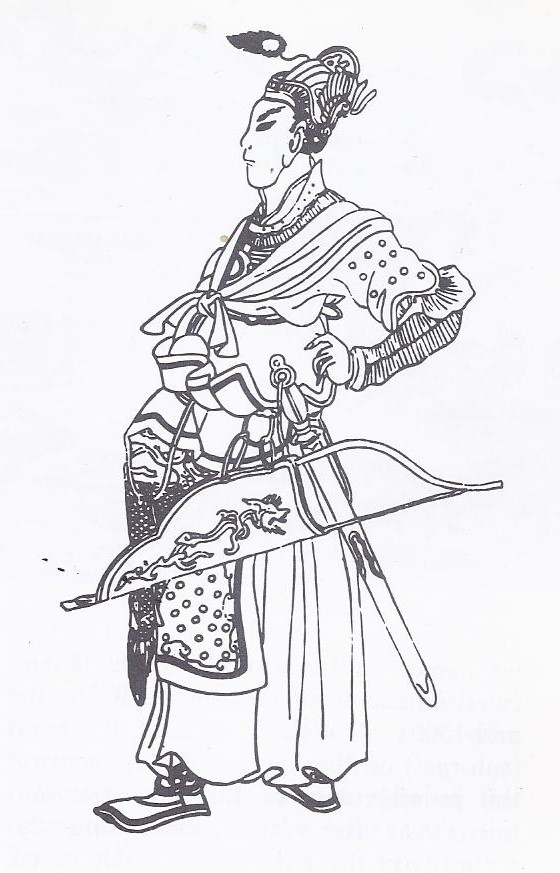
The Tatar ”Golden Horde” conquered and ruled Russia. This lack of unity resulted in constant warfare between local rulers. It also made Russia, with its lack of natural defenses, an easy prey to new invaders. In the 1200’s, when wave after wave of pitiless Tatars under Mongol leaders rolled westward from central Asia, Russia was easily conquered. The Tatar invasion was not merely an assault by an army. It was a migration of a wild nomadic people with its horses, flocks, tents and military supplies. As one historian puts it, “Other nations had armies; the Tatars were an army.”
One of the first Tatar attacks on Russia was led by a grandson of Genghis Khan, the most dreaded conqueror of all time. The squat, skillful Tatar bowmen who fought on horseback were called the Golden Horde because their leader occupied a tent so luxurious that he named it the Golden Tent. Tatars ruled Russia from the mid-1200’s to the mid-1500’s. To their capital city Sarai on the lower Volga River went the proud rulers of Russia’s cities and towns year after year to acknowledge the authority of the Tatars and weekly to ask for favours.
Among these princes was the heroic Alexander Nevski, ruler of the city of Novgorod. Under him, Novgorod had grown in power and had prospered. Under him also it had beaten off an attack by the Teutonic Knights in a furious battle on a frozen lake 100 miles west of the city. This victory preserved Novgorod’s freedom and Alexander Nevski was hailed as the hero of his day. However, for the sake of his people, even he had to bow to the Tatars.
Christianity expanded in Russia during Tatar rule. Once the fierce Tatar warriors had completed their conquests, they took little interest in anything but the wealth they could wring from their Russian subjects. Like the Vikings before them. the Tatars demanded obedience from local leaders but did not take over the government of cities and towns or interfere with Slavic customs. The Tatars actually helped the Orthodox Church to expand because they protected churchmen and Church property. Monasteries increased in number, partly because people who wanted to escape the disorder and violence of the times could do so by becoming monks. The monasteries of the Orthodox faith in Russia healed the sick, cared for travellers and preserved learning, much as the Roman Catholic monasteries did in western Europe.
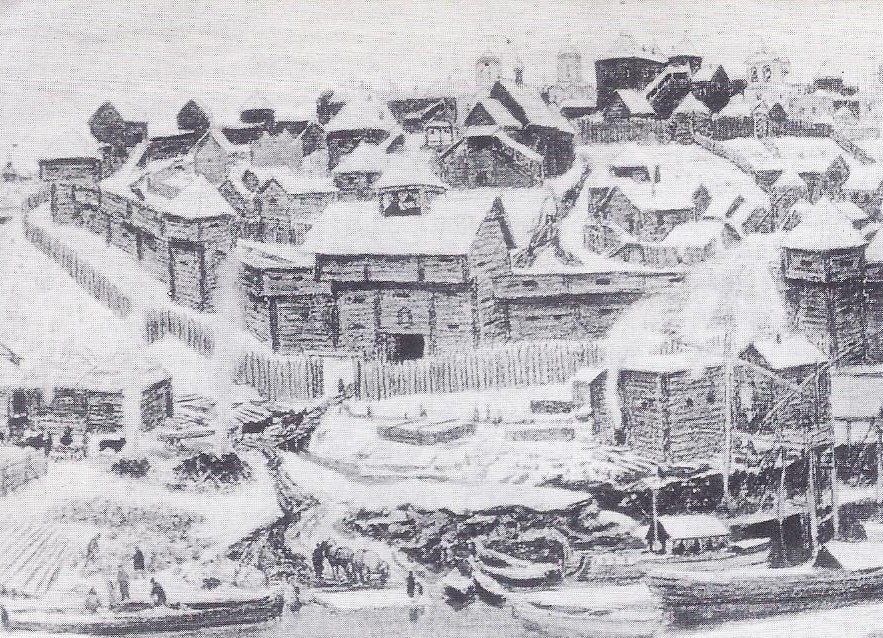
Geography favoured the rise of Moscow. Almost in the centre of Russia, on the bank of the Moskva River, was a low hilltop where soldiers and pioneer traders had built a blockhouse and a wall of logs. They called the blockhouse and its walls a kremlin, or fort. As trade increased, more houses were built both inside the kremlin and outside its walls. In this way there developed a town which its people named Moskva after the river, but which we call Moscow.
Moscow is first heard of in the middle 1100’s. That was nearly a century before the first Tatar invasion. In its sheltered position in the middle of European Russia, Moscow grew stronger and stronger. A feudal type of life existed in the region around Moscow, similar to that in western Europe about which we read. Important nobles held the title of duke. In time the most powerful duke, called the grand duke, ruled an area larger than most European countries.
Moscow made gains even under Tatar domination. Like other local rulers, the chiefs of Moscow had to bow to Tatar control. They patiently bided their time and actually benefited from the rule of the Golden Horde. As long as the Tatars were strong, Moscow was protected from enemies to the west. Thus the Poles, Germans, Lithuanians and Swedes, who had been nibbling at western Russia, left Moscow alone.
The rulers of Moscow even borrowed ideas and practices from the Tatars. The secret of Tatar power was the ability to compel absolute obedience. In time the chiefs of Moscow, by tyranny and fear, succeeded in requiring their own subjects to give them the same kind of blind obedience. Moscow’s rulers adopted still other Tatar customs. They took censuses, counting their people and their chief possessions and they had one of the earliest postal systems important in so vast a country.
The result was that in the Moscow area there gradually developed a civilization borrowed from two sources — Constantinople and the Tatars. From Constantinople came their religious beliefs, their art, their ways of local government. From both Constantinople and the Tatars came the tradition of absolute rule by ruthless monarchs. As a result of these varied influences, Russian ways of living and thinking became neither wholly European nor Asiatic but a combination of both.
2. How Did the Rulers of Moscow Gain Absolute Power?
Tatars tended to adopt Slavic ways of living. The longer the Tatars remained in Russia, the more did differences between them and the Slavs tend to disappear. To be sure, Tatar rulers still required Slavic princes to pay tribute and bow to their authority. Moreover, from time to time new waves of Tatars invaded Russia. Nevertheless, as the Tatars settled on the land and took up farming, their way of life became more and more like that of the Russians. In most parts of Russia it became difficult to tell “who had conquered whom.”
Moscow’s power rose as that of the Tatars declined. By the late 1400’s, the Tatar rulers had withdrawn to Kazan, 500 miles east of Moscow. The ruler of Moscow at that time was Grand Duke Ivan III, called Ivan the Great. Ivan humbled many of the nearby Slavic rulers and extended his control over most of the northern part of European Russia. For example, Moscow’s rulers had long looked with envy upon the wealth of the old and powerful city of Novgorod. That wealth came from the furs of animals trapped in the northern forests and from trade passing through Novgorod’s outlet to the Baltic Sea. Already Moscow was squarely on the trade route to the Far East by way of the Volga River and the Caspian Sea. If Moscow could also control an outlet on the Baltic, it would benefit not only from the silk and tea trade of Asia but from the fur trade of northern Europe. So in the 1470’s Ivan the Great attacked Novgorod — swiftly, furiously and victoriously.
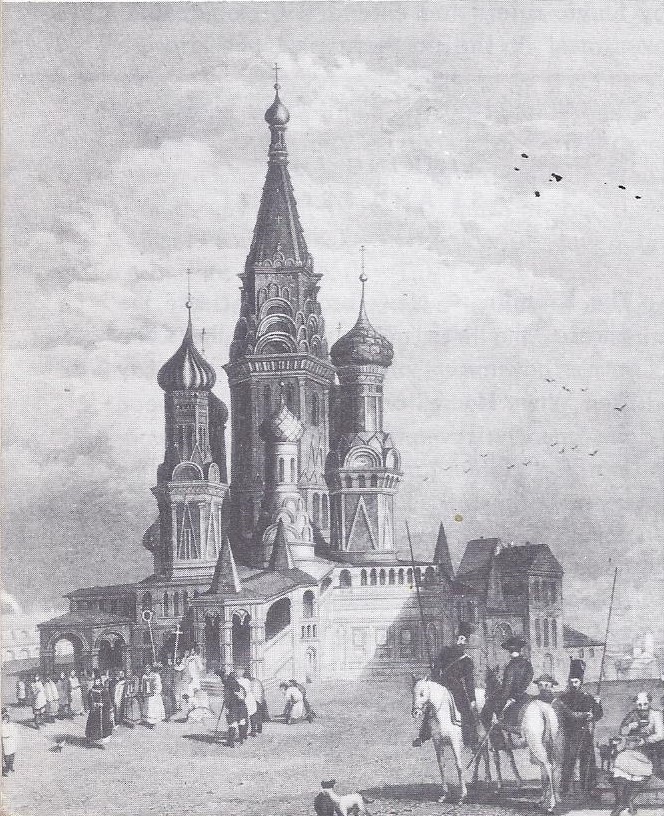
Moscow became the capital of a nation. Ivan the Great next refused to pay tribute to the Tatars and the Duchy of Moscow became independent. Two nations now existed side by side in what we call European Russia. Muscovy was the name of the western and northern portion, ruled by the Grand Duke of Moscow. From the neighbourhood of Kazan at a great bend of the Volga River all the way to the Caspian Sea and westward to the steppes north of the Black Sea was the loosely organized Tatar territory. This was where the huge Asiatic empire of Tatary bulged into Europe.
Ivan IV became the first czar. Muscovy had become an absolute monarchy in fact but not yet in name. It remained for Ivan the Great’s grandson, Ivan IV known as the Terrible, to take the title of Czar in the year 1547. Czar or Tsar is Russian for Caesar, the Latin title given to Roman emperors.
From Ivan “the Great” to Ivan “the Terrible” sounds like a decided change for the worse and so it was. Ivan the Terrible, however, probably would have escaped his evil sounding name if he had died early in his reign. He defeated the Tatars and made their cities along the lower Volga subject to Moscow. Furthermore, he began his rule as a reformer. He tried, though unsuccessfully, to bring in skilled workmen from other countries, as other Russian czars and dictators succeeded in doing long afterward. He listened personally to petitions from his subjects. He also set out to make the government of his country more efficient. It seemed for a while that Ivan might share his authority with members of a national lawmaking body representing the upper classes.
Even during the “good” years early in his reign, however, Ivan had shown great cruelty toward the boyars or noble landlords whose power he wished to curb. Then about the middle of his reign Ivan the Terrible went half-mad and what happened after that does not make pleasant reading. He picked a quarrel with Novgorod, which had partially recovered from its conquest a century before and destroyed it. The massacre of the inhabitants was one of the most terrible in history. Ivan IV wasted his country’s people and resources in futile wars. He committed murder after murder. Among his victims, in a fit of rage, was his favourite son.
Russian peasants became serfs. Ivan’s remaining son Theodore followed him as czar. Theodore was an unimportant ruler, but one of his acts deserves mention. In the late 1500’s he made it illegal for farm workers to leave, without permission, the estates where they worked. That marked the first step toward establishing serfdom in Russia, centuries after serfdom had been introduced in western Europe.
Under the rule of all-powerful czars, the condition of the Russian peasants became the worst in Europe. “All who shall have been born after the census,” declared the Russian government in 1646, “because their fathers’ [names] are written in the census book” were forever after to be serfs. So were their children and children’s children after them. There seemed no way to escape from the authority and cruelty of the landlords — except to run away!
That is what thousands of downtrodden, poverty-stricken Russian peasants did. Frightful man hunts followed as owners searched for their missing serfs. Some runaway peasants hid in the forests. Others managed to escape to the south of Russia, where they joined the Cossacks. The Cossacks, who were originally half-civilized herdsmen, had developed into crack cavalrymen. They boasted that though the czar ruled in Moscow, the Cossacks ruled themselves.
Runaways, if caught, were cruelly punished. For some, out came the dreadful leather-and-wire whip. Other unfortunate serfs were sent away to work for the rest of their lives in far-off mines and forests. As for justice, there was none. The landlord’s power over his serfs was absolute.
TIMETABLE IMPORTANT RULERS 0F EARLY RUSSIA
Ivan III (“Ivan the Great”), 1462-1505
First ruler of a unified Russian nation, conquered rivals of Moscow, freed most of Russia from Tatar rule.
Ivan IV (“Ivan the Terrible”), 1533 – 1584
Took title of Czar, destroyed Novgorod and massacred its inhabitants.
Theodore I, 1584-1598
Established serfdom, 1597
Peter I (“Peter the Great”), 1689-1725
Tried to make Russia a Western nation, made the royal power absolute, won the Great Northern War (1700-1721)
Elizabeth, 1741-1762
Able, corrupt, favoured the nobility.
Catherine II (“Catherine the Great”), 1762-1796
Engaged in wars of aggression — to gain territory at the expense of the Poles and the Turks, 1768-1792
Took part in three partitions of Poland, 1772, I793, I795
What was the Russian serf’s life like? The treatment which he received and the conditions under which he lived did much to shape the life of the Russian serf. Russia’s winters are long, severe and spring thaws turn the land into a sea of mud. Only for a few months each year, therefore, could the Russian peasant work the land and he then had to labour long, hard and swiftly. During the remaining months the peasant and his family, like Andrei the whittler, were confined in their homes on the silent plains or in the deep forests. During the bitterly cold winter months Russian peasants turned to wood carving, weaving, lacemaking and the like. They sang songs like the “Song of the Volga Boatmen” in which a simple theme was repeated again and again.
The village church played a highly important part in the dull life of the downtrodden peasant, for his strong religious faith gave him great comfort. He looked forward to a heaven where he would possess the things he could not have on earth — warmth, enough to eat, kindness. The village church was to him the pathway to this paradise. The religious pictures called icons were full of meaning for the Russian peasant.
These pictures were awkwardly made and the colours often clashed; but into them, as the historian Hendrik Van Loon wrote, “went all the dreams of happiness of a highly sensitive but terribly oppressed race.”
Peter the Great was an extraordinary man. Early in the 1600’s Russia suffered what is known as the Time of Trouble. As revolts and civil war swept the country, the government broke down. Then in 1613, a new royal family came into power. This was the Romanov family, which ruled Russia for three centuries. Strongest and ablest of all the Romanov czars was Peter I, commonly called Peter the Great. Peter ruled Russia for 36 years, during the late 1600’s and early 1700’s. This giant of a man possessed unusual characteristics.
Peter, like Louis XIV, worked hard at his job of ruling and because of his tremendous energy, he often turned up at his office at three or four o’clock in the morning. There he kept Clerks on constant duty, ready for work whenever he should appear.
Along with his great energy Peter possessed boundless curiosity. There was apparently no limit to Peter’s desire to find out how things work. His intense interest in ships led him to work for a time in the shipyards on the White Sea in northern Russia. Once when he was in Holland Peter watched a dentist pull teeth. Nothing would do but that Peter must learn how. Peter also fancied himself capable of performing surgical operations and attempted one, but his unwilling and unfortunate patient died.
This unusual man could be terribly cruel, too. He handed out fearful punishment to the guardsmen who revolted while he was traveling abroad. Peter killed many of the guards with his own hands, but he also forced some of his nobles to practice their swordstrokes on the condemned men. Over a thousand were put to death as a terrifying example to any other subjects who might be tempted to become traitors.
Peter had no mercy — not even for his own son. Ivan IV had killed a son in anger and bitterly repented. Peter had his son tortured to death.
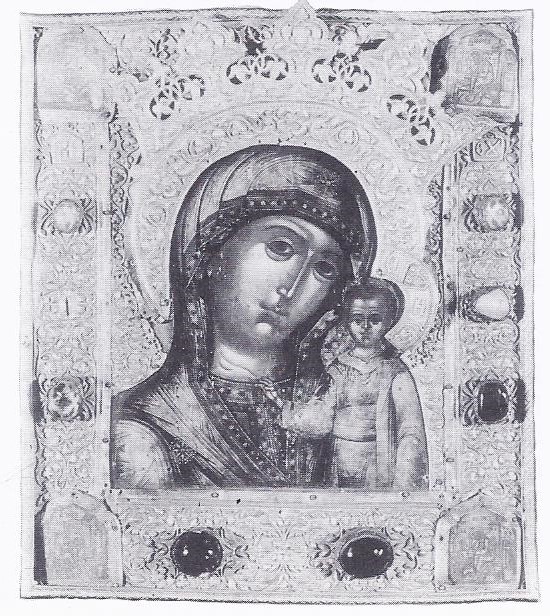
Peter the Great was an absolute ruler. Peter was determined to have all power in his own hands. He even placed the Russian Church under government control. It was ruled by a council of churchmen with one non-churchman, the “czar’s eye” as Peter described him. Under this arrangement the Church became more or less a department of the government, rather than an independent body which might challenge the czar’s authority. Peter also broke the power of the old noble families by ruling that birth and family no longer would be the basis for nobility. Instead, loyal service to the czar would determine who would enjoy wealth, position and power.
Peter’s travels in western Europe gave him new ideas. In 1697 a certain Peter Mikhailov (the name was obviously assumed) went along with a group of Russian statesmen who were touring England, France and Holland. The tall, loud-voiced bear of a man, explained the Russian, was a sea captain. Officials of the countries visited were not fooled. They knew this Peter was the Czar. If he chose to dress like a seaman, preferring to hide his high rank, they would humour him.
So they were careful to show Peter what he wanted to see and to take him where he wanted to go. They even arranged matters so that this odd person could work as an ordinary carpenter in a Dutch shipyard, for he had said he wanted to learn more about shipbuilding. The surprised craftsmen reported that Peter was a pretty good shipbuilder himself.
Peter took steps to Europeanize Russia. This man who was at times a monster of cruelty was extremely patriotic. He had great ambitions for Russia. He had taken his trip to England, France, Holland and other parts of Europe in order to learn things which would help him to make Russia a great European power. Making Russia “European” could mean many things. To Peter, it meant imitating all Western ways of life as he understood them. Unfortunately the steps which Peter took to achieve these purposes were not always soundly planned or wisely carried out.
1. Peter the Great compelled his people to adopt Western customs. Peter insisted that his subjects, particularly the nobles, give up many of their Russian ways for those of western Europe. Often such changes were not welcomed. The French court had become the fashion centre of Europe. The Russian nobles, however, did not wish to exchange their flowing robes for French-styled clothes, nor did they want to cut off their long beards, but out came the shears to shorten their cloaks and off came the beards, for Peter had so ordered. The wives of nobles, who previously had led sheltered lives in their homes, were summoned to take part in social events at the court. The gaiety and fashions of Paris and Vienna had moved to out-of-the-way Moscow!
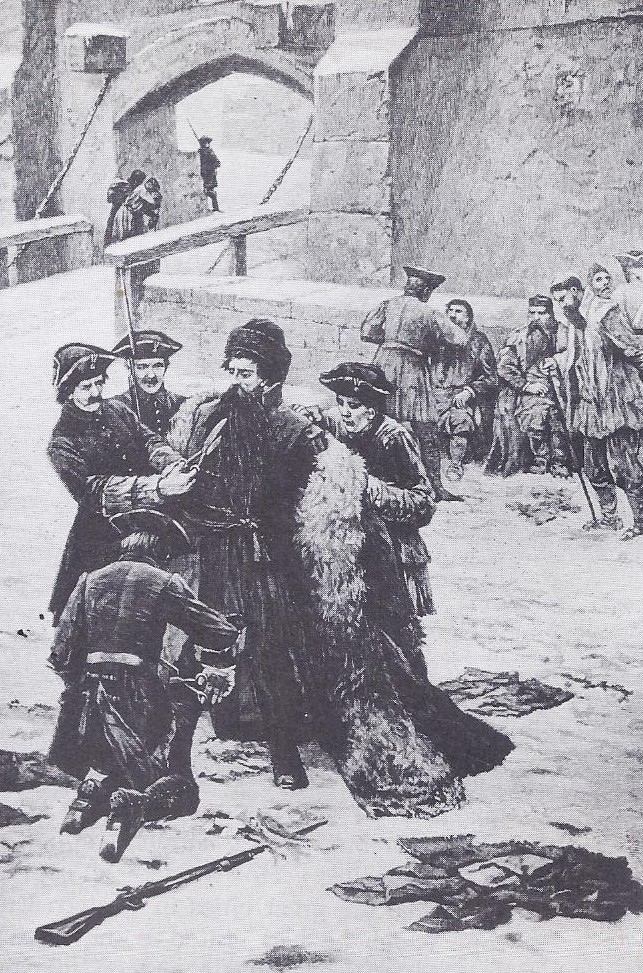
2. Peter modernized the army, navy and government. The Czar set about reorganizing old Russia with his usual energy. Peter wanted a first-class army and navy modeled on western European lines and a more efficient system of national and local government.
A new council, known as the Senate, replaced an older council of nobles. Peter encouraged the senators to work hard, fining those who failed to do a good job. The Senate helped the czar plan laws and was expected to carry them out. Separate administrative departments were set up for the army, the navy and the collection of taxes. Peter invited many foreigners to settle in Russia and train Russians to run these new departments. To make local government more efficient, Peter divided Russia into eight sections, each with a governor directly responsible to the czar.
3. Peter built a new national capital at St. Petersburg. He wanted a capital more like the great cities in western Europe which he had visited and nearer to them. He selected a site on marshy land near the Gulf of Finland and ordered the construction of a new city named St. Petersburg (changed to Petrograd in 1914 and to Leningrad in 1924). This was a tremendous task involving great labour and expense. Workers, chiefly peasants, were drafted to fill in the marsh with dirt and stone. Hundreds fell ill and welcomed death as a relief from forced toil. Russians were forbidden to use stone in building until Peter’s city built of stone had risen on the marshland.
4. Peter encouraged education and industry. If members of the noble class were to serve Russia well, they must be educated. Peter therefore established schools which the children of the nobility had to attend, though little was done to educate the children of the common people. He founded academies for advanced study. He arranged to have many young Russians sent abroad to study. He introduced printing presses into Russia.
Peter also realized the need to develop Russia’s trade and industry. He sent expeditions to all parts of his realm and into Siberia to survey the natural resources. He aided merchants by granting privileges to the merchant guilds and by giving merchants considerable voice in the affairs of local government. He aided the textile and metal industries by not requiring them to pay taxes and by granting them government loans. In addition, Peter introduced better farming methods.
3. How Did Peter the Great and Other Rulers Expand Russia?
Peter the Great sought an outlet to the Black Sea. You have already learned how Peter the Great sought to modernize Russia and to make the power of the czar supreme. Let us see how he tried to achieve another important goal — obtaining outlets to the sea for Russia.
Young Peter had just become Czar when he tried to drive the Turks from the northern shores of the Black Sea. The first time he failed. Shortly afterward, however, he obtained control over the region around Azov, where the Don River flows into the Black Sea. This gave Russia its first sea outlet. The following year Peter made his famous trip to western Europe. When he returned to Russia, he was determined to win also a “window on the Baltic.”
Russia and Sweden clashed in the Great Northern War. Peter’s ambition entangled Russia and Sweden in the Great Northern War, which lasted from 1700 to 1721. Despite its small population, Sweden, since the days of Gustavus Adolphus, had been one of the great powers of Europe. While Russia was slowly building up its strength, Sweden dominated the Baltic Sea. Swedish kings ruled Finland, the Baltic area and parts of northern Germany as well as Sweden itself. Powerful and able though these kings were, they were not absolute monarchs, for Sweden had a parliament in which the clergy, nobles, townspeople and peasants were represented.
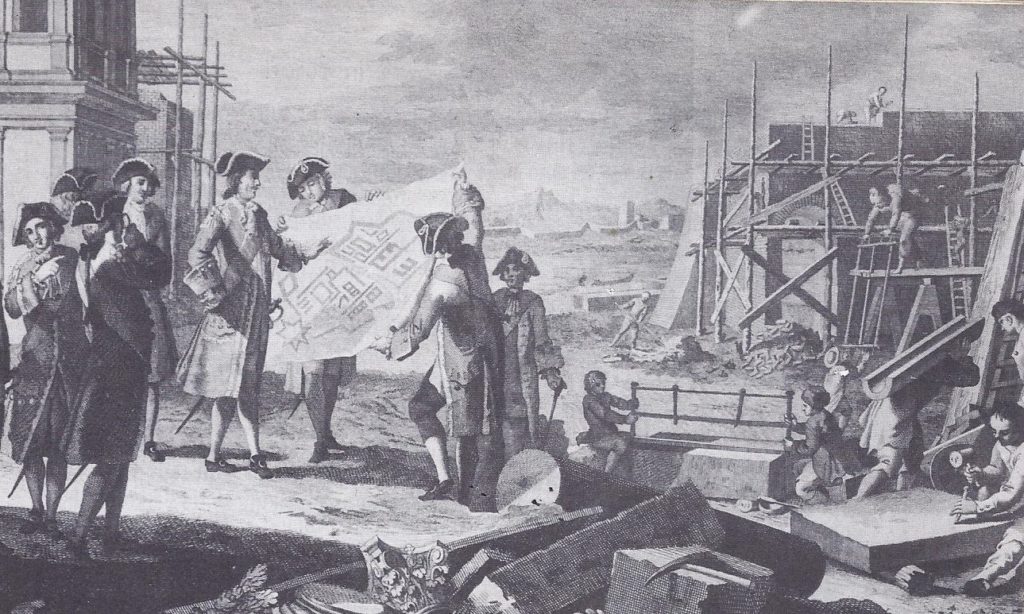
Charles XII was a military genius. Charles XII became king of Sweden eight years after Peter the Great became sole ruler of Russia. Charles was only fifteen years old when he came to the throne, but this youthful king turned out to be a military genius. So fierce was he in battle that he was nicknamed the “Madman of the North.” Finding that his neighbours — Russia, Denmark, Poland and the German states of Prussia and Saxony — were plotting to divide up his lands, he fought them all. Charles’ Victories were amazing. He defeated Denmark and Russia, frightened Prussia into staying neutral and drove the ruler of Saxony from the throne of Poland to which he had been elected. After placing his own candidate on the Polish throne, Charles turned again to Russia.
Charles XII finally met defeat and death. Advancing at First toward Moscow, the Swedish king suddenly turned south into the Ukraine where he had a secret ally, Mazepa, the hetman (headman) of the Cossacks. Charles and Mazepa planned to turn the entire Ukraine against the Russians. Peter, however, suspected their intention, appointed a new hetman and forced Mazepa to flee the country. Far from supplies and reinforcements, Charles XII was defeated in 1709 in a decisive battle at Poltava.
Charles found refuge in Turkey. Here he stirred up the Turks against Russia and they compelled Czar Peter to sign a treaty which restored Azov to Turkey. In 1714 Charles finally returned to his kingdom. He was killed four years later during a campaign in Norway. The Great Northern War dragged on until 1721, when Peter got what he wanted — the long-sought outlet to the Baltic.
Peter the Great’s successors followed his policies. By the time Peter died in 1725, Russia had become one of the great European powers. Its boundaries had been extended. Its ruler ranked as one of the powerful monarchs of the day. Its people had made a beginning in adopting Western ways. Of a succession of rulers who followed Peter, only two, Elizabeth and Catherine II (“the Great”), were particularly able. These czarinas (meaning “women czars”) continued Peter’s program of expanding Russia’s territory.
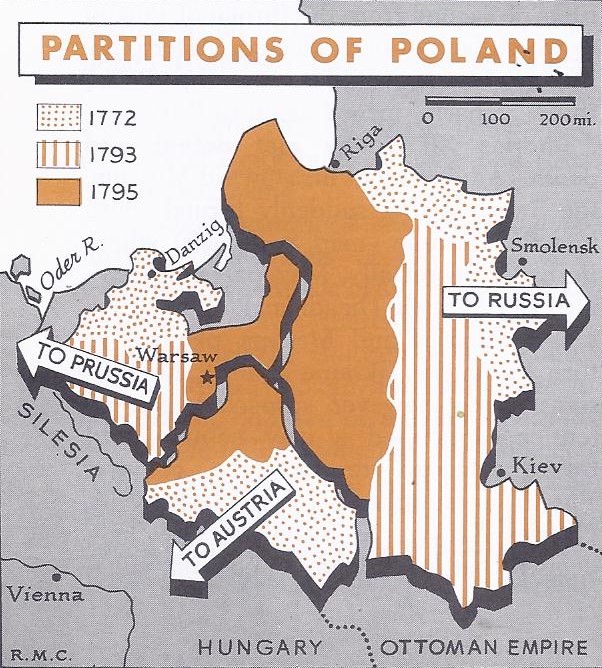
Catherine the Green took territory from neighbouring countries. Catherine the Great, Czarina of Russia in the late 1700’s, was as ambitious as Peter the Great. Her wars, like many others before her time, were what we call wars of aggression, or unprovoked seizure of territory belonging to other nations.
On the south, Catherine drove the Turks from the northern shores of the Black Sea, thus regaining an outlet to that sea that Peter the Great had won and lost. She also looked longingly at Constantinople, for Russia’s outlet to the Black Sea meant little so long as the Turks held the gateway to the Mediterranean. She was unable, however, to win Constantinople. In the north, Catherine defended Russia’s holdings in Finland from Sweden. Her grandson, Alexander I, took the rest of Finland from Sweden in 1808-1809, but it was to the west that Russia at this time made its most important gains.
We read how Poland became weak through the shortsightedness of its nobles. Catherine was eager to bring Poland under Russian control. Austria and Prussia also wanted to control Poland and they were determined as well that Russia should not become too powerful. Fearful that Austria and Russia might come to blows, Frederick the Great of Prussia engineered the first partition, or dividing-up, of Poland in 1772. Russia, Prussia, Austria shared in this partition and the first two acquired still more Polish land in 1793. Two years later the three nations took what was left of Poland. As an independent country, Poland disappeared from the map for more than a hundred years.
Catherine the Great played at reform. In internal or domestic affairs Catherine’s rule resembled that of other despots of her time. Catherine was an authority on law. She knew many of the forward-looking writers and reformers of her day. She encouraged foreign visitors. Catherine at least pretended to be interested in the welfare of the Russian people She helped check the spread of disease by introducing the new method of vaccination against smallpox, a dread plague at that time. Her much-discussed political reforms, however, were usually just talk. Like beauty, they were only “skin deep.” The lot of the serfs was no better than before. Even talk of reform stopped late in Catherine’s reign when she feared that the French Revolution, about which we will read, might start a world wide uprising of oppressed peoples.
Russia got control of Siberia. No account of the growth of Russian territory would be complete without at least a reference to the greatest of all additions — that of Siberia. The term Siberia is sometimes used (1) to include all of Asiatic Russia. More often (2) it refers to all of Asiatic Russia except the vast steppe region east and northeast of the Caspian Sea. We shall use it in the second sense. Even in this limited sense, Siberia is nearly twice as large as America, though its population is much smaller.
The first conquest of Asiatic territory by Russians was made in the late 1500’s by an adventurer named Ermak. Ermak, a Cossack outlaw whom Czar Ivan IV had sentenced to death, was employed by wealthy Russian landowners to ward off Tatars who attacked them from the east. Ermak was their choice because he was the toughest of the Cossacks and the Cossacks were the toughest Russians. With 600 followers who had firearms, Ermak soon routed the Tatars, who were still in the bow-and-arrow stage of warfare. The capital of Tatary was a river town about 500 miles east of the Urals. In 1581 the Cossacks captured this town which they called Sibir. From Sibir came the name of the entire country, Siberia. The Cossacks then returned to European Russia with a heavy load of furs. Ermak was pardoned and all were rewarded by the Czar.
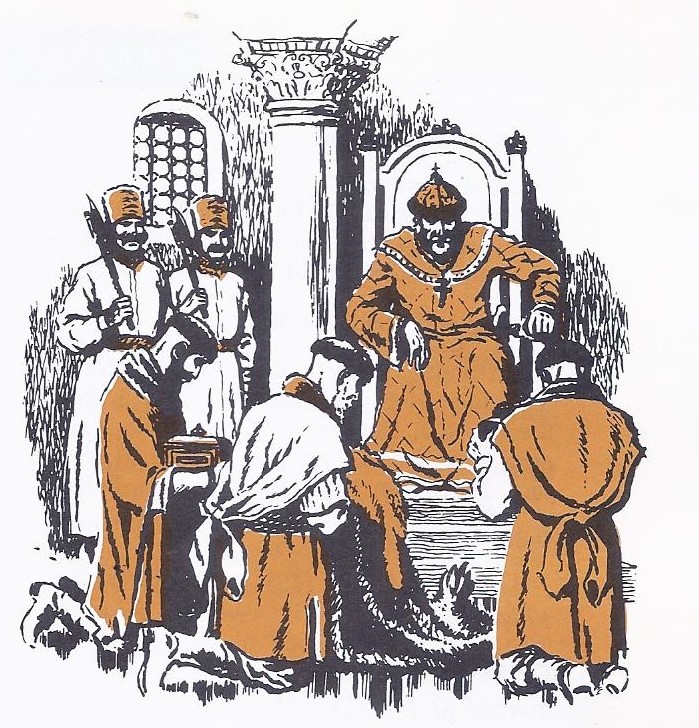
Never did so small a force gain so much territory for any country in so short a time. The Tatars had grown soft and offered no serious resistance to the more civilized Russians. Many of the Tatars, in fact, were friendly. Although distances in Siberia were immense, river travel was easy for the Russians, who advanced from one great northward flowing river to another by way of their tributaries. Within half a century they had established forts and stockades along the rivers two-thirds of the way to the Pacific. In 1648 they had reached the northeastern extremity of Asia within sight of Alaska.
The vast area of Siberia, with its huge population of fur bearing animals and its few human beings, had been won for Russia almost without a struggle. In the 20th century, too, Siberia was to become very important.
